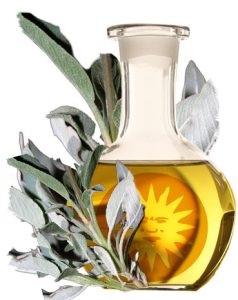Sage Essential Oil (Salvia lavandulifolia)
At Esencias Lorente, we are pleased to introduce our sage essence (Salvia lavandulifolia), an aromatic and versatile option that adds depth and complexity to a variety of products. Meticulously extracted from fresh sage leaves through a specialized distillation process, our natural essences capture the fresh and herbaceous aroma characteristic of this Mediterranean plant.
With its distinctive aroma and beneficial properties, natural sage essences are appreciated for their stimulating qualities and their ability to promote well-being. Widely used in the perfumery industry and in personal care products, natural sage essential oils add a refreshing and revitalizing note to a variety of products, from lotions to soaps and household products.
At Esencias Lorente, we are committed to providing the highest quality essential oils, produced with care and attention to every detail. Additionally, we are proud to have recognized quality certifications, such as ECO CERT certification and kosher certification, which support our dedication to quality and sustainability at every stage of our production process.
Description: Liquid aspect essential oil as well as yellow coloured and characteristic camphored smell.
Bloom: This plant is both wild and cultivated. It blooms in summer.
Growth: In the North Murcia and in the Baza Mountains.
Composition: It is mainly composed by Alpha-Pinene, D-Limonene, Cineol, Linalol, Camphene and Camphor.
Use: Mostly in perfumery and in a lesser extent in aromatherapy.
TECHNICAL TABLE OF SAGE ESSENCE
ORGANOLEPTIC INFORMATION
PHYSICO-CHEMICAL INFORMATION
CHEMICAL COMPOSITION (Active Ingredients)
Sage essence, derived from the Salvia lavandulifolia plant, contains a number of chemical components that confer therapeutic and aromatic properties. While the exact chemical composition can vary depending on various factors, here are some of the main chemical components that may be found in Salvia lavandulifolia essential oil:
- Alpha-thujone: A compound that may have antioxidant properties and contribute to the characteristic aroma of sage.
- Beta-thujone: Similar to alpha-thujone, it may also contribute to the aroma and have antioxidant properties.
- 1,8-cineole (Eucalyptol): Known for its beneficial effects on respiratory health and decongestant capability.
- Alpha-pinene: A component that may have antimicrobial properties and contribute to the fresh aroma of sage.
- Beta-pinene: Similar to alpha-pinene, it may also contribute antimicrobial and aromatic properties.
- Linalool: A compound with relaxing properties and a pleasant aroma.
- Germacrene D: Contributes to the aroma of sage and may have therapeutic properties.
These are some of the chemical components that might be present in Salvia lavandulifolia essential oil. The ratio and presence of these components can vary depending on the geographic region, growing conditions, and the method of essential oil extraction.
DESCRIPTION OF SAGE ESSENCE PLANT (SALVIA LAVANDULIFOLIA)
Sage essence, from the species Salvia lavandulifolia, is an aromatic plant in the Lamiaceae family found in Mediterranean areas, mainly in Spain. It is also known as salvia lavandulifolia, Roman sage, or Jaén sage. It is characterized by its aromatic and medicinal properties.
Description of Salvia Lavandulifolia:
Salvia lavandulifolia is a perennial shrub that can reach up to 50 centimeters in height. Its stems are woody and branched, with opposite, narrow, elongated leaves of a silvery green-gray color on the top and whitish on the bottom, giving it a characteristic silvery appearance. The flowers are grouped in terminal spikes and can have shades ranging from light blue to violet.
Uses and Benefits of Salvia Lavandulifolia Essence:
- Medicinal: Salvia lavandulifolia contains compounds such as rosmarinic acid, flavonoids, and essential oils, which confer antioxidant, anti-inflammatory, and antimicrobial properties. It has been traditionally used to treat respiratory and digestive conditions, and as a mental stimulant.
- Aromatherapy: Salvia lavandulifolia essential oil is used in aromatherapy for its fresh and herbal aroma, considered revitalizing and can help relieve stress and improve concentration.
- Culinary: Although less common in cooking than other varieties of sage, some people use the leaves of Salvia lavandulifolia to flavor certain dishes, especially in Mediterranean cuisine.
- Effects on Memory: Research has been conducted suggesting that Salvia lavandulifolia could have positive effects on memory and cognitive function, though more research is needed to confirm these benefits.
